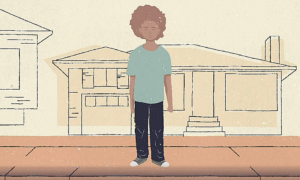 They’re following the script to the letter in Minnesota.
They’re following the script to the letter in Minnesota.
Act 1: A newspaper reports on the horrifying death of a child “known-to-the-system.”
Act 2: The ritual sacrifice of the agency chief.
Act 3: The naming of the OBRC — Obligatory Blue-Ribbon Commission.
Act 4: The invocation of the swinging pendulum. The OBRC declares that “Minnesota’s child protection system has moved from one end of the spectrum to the other since 1999,” and now supposedly puts too much emphasis on family preservation.
The report is seized upon by those who want to tear apart more families — those whose 19th-century counterparts proudly called themselves “child savers” — as part of an ongoing effort to discredit one of the few large-scale efforts to avoid needless foster care: differential response.
There’s just one problem. The pendulum never actually swung. In 2013, the most recent year for which state-by-state data are available, Minnesota took away children at a rate more than double the national average, when entries are compared to the number of impoverished children in each state. Nationwide in 2013, some 255,000 children entered foster care. Were every state like Minnesota, it would have been 540,000. And that was before Act 5 — the foster-care panic — the huge spike in children taken from their homes that inevitably follows Acts 1 through 4.
An almost identical scenario is playing out in Massachusetts, again with differential response as the scapegoat. Massachusetts takes children at a rate 45 percent above the national average.
[Related: Senators Push to Keep Kids Out of Foster Care]
But, as we’re now seeing in a different public policy debate, the one about Syrian refugees, data are no match for fear-mongering. A horrific act of child abuse can be exploited as easily as a horrific act of terrorism. And when a child known to the system dies, some of America’s latter-day “child savers” start sounding like Donald Trump.
But there is nothing in the research on differential response to justify Trumpesque hysteria.
A 2011 literature review, looking at 23 studies, found none concluding that differential response compromised child safety. Three more studies, all using random assignment and designed specifically to deal with alleged flaws in earlier research, have been published. Two found no indication that children in differential response were less safe; one found worse safety outcomes by one measure.
The child savers have a ready answer for the fact that almost none of the research goes their way. It amounts to: All the studies we don’t like are biased! There is some irony in this. I am aware of only one effort to systematically test the bias of researchers in the child welfare field. It did not go well for the child savers.
Some of the concerns about differential response are valid, including those raised in the Illinois study. But the lesson from that study, and the other two, is to find out why two models work while the third may not, then follow the models that work. Similarly, I agree with critics who complain that too many different approaches all call themselves “differential response.” The model needs to be standardized — by looking at what worked best and replicating it.
None of this is new. Intensive family preservation services, though a very different kind of intervention, faced the same kind of backlash as differential response.
Such efforts to discredit anything that keeps children safely in their own homes reflect a dangerous double standard.
One child welfare intervention has been proven over and over again to be unsafe: foster care:
- Study after study finds abuse in one-quarter to one-third of foster homes, and the record of group homes and institutions is worse.
- Two massive studies involving more than 15,000 cases documented that in the typical cases seen by child protective services workers, not the horror stories, children left in their own homes consistently fared better in later life than children consigned to foster care. These are also the cases best suited to differential response.
Nearly 40 years ago, a leader of an adoption agency told me something I’ve never forgotten: “The burden of proof should always rest with those who think children don’t belong with their families.”
But that’s been stood on its head. Instead, here’s what “evidence-based” means in child welfare: If you want to challenge the foster care status quo, you’d better be able to dot every i and cross every t on a huge pile of randomized controlled trials. If, on the other hand, you just want to conduct business as usual and shovel children into substitute care, no evidence is required.
Richard Wexler is executive director of the National Coalition for Child Protection Reform.
More related articles:
Colbenson: We Know How to Help Foster Kids Despite Past Trauma
Foster Care System Not Always Best Option for Kids
Community Programs Are Safe Haven for Foster Children






























